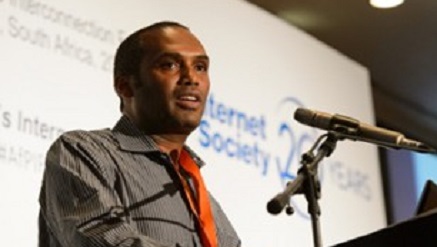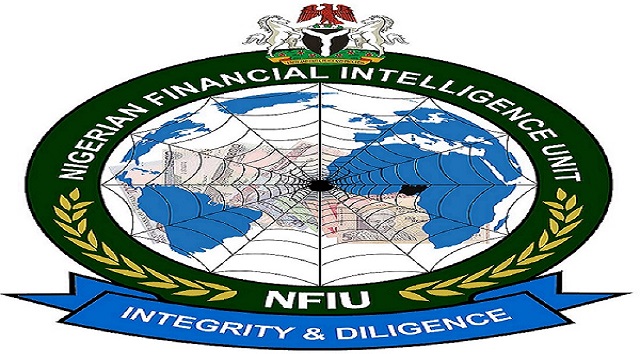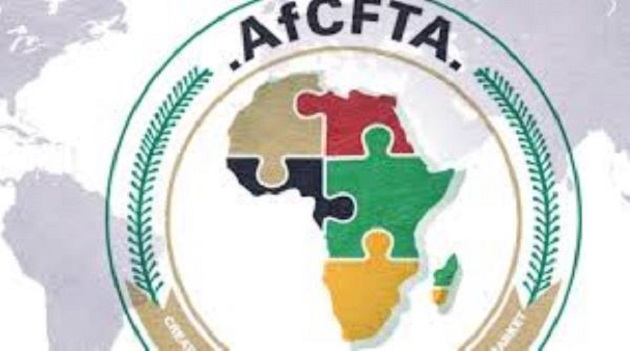E-Business
Internet Society Report Highlights Internet Governance Benefits, Multistakeholder Model

In order to better understand what African nations need to do to reap the full benefits of the Internet, the Internet Society today released the study “Internet Development and Governance in Africa.
The report, issued at the Africa Internet Summit 2015 in Tunis, Tunisia, where Nigeria Internet Registration Association (NiRA) also participated, provides a comprehensive overview of the current state of the Internet in Africa and highlights the importance of the multistakeholder model of Internet governance as an essential part of Africa’s Internet ecosystem.
In light of the rapid growth experienced by the continent in the past ten years, the report finds that the time is right to maximize that potential.
“As Africa’s user base grows, the need to coordinate and manage the growth and development of the Internet becomes increasingly important,” said Dawit Bekele, Internet Society regional bureau director for Africa.
“If Africa has to make the progression towards a digital economy to reap the full benefits of the Internet, it needs to transition from basic connectivity to interconnectivity of networks and to interoperability of systems, and enable the development of applications and services that drive economic and social well-being.”
The report highlights steady adoption of this transformative technology since the introduction of the Internet to Africa in 1991, reaching just over 20% continent-wide, but these aggregate indicators mask glaring disparities in Internet development levels from country to country.
Morocco, for instance, has Internet penetration rates above 50%, while other African countries have penetration rates just under 2%.
The majority of countries have Internet penetration below 10%–well below the 20% threshold found to be critical for countries to reap economic benefits.
IXPs
One of the ways, identified by the report, to improve the interconnectivity of networks is to establish Internet eXchange Points (IXPs) at the local level.
Africa now has more than 30 IXPs and is well on the way to achieving the goal of at least one IXP per country.
The establishment of IXPs can catalyze the build-out of terrestrial infrastructure which in turn would make access to the Internet cheaper and faster.
One example of this effort is the East African Backhaul System (EABS), which will serve Kenya, Tanzania, Uganda, Rwanda, and Burundi.
Through this infrastructure, the landlocked countries of Uganda, Rwanda and Burundi have established backbones that gain access to submarine fiber almost at the same price as that of the coastal countries
Digital Broadcasting
An area that could be transitioned faster is the migration from analogue to digital broadcasting, which offers more opportunities to increase Internet access by freeing up unused spectrum.
By June 2014, only 19 countries had started on the digital transition and by December 2014 only three countries (Tanzania, Rwanda and Mauritius) had completely switched off their analogue signals.
As such, the majority of countries will not meet the ITU’s June 2015 deadline.
IPv6
Another recommendation contained in the report is that the transition to and adoption of IPv6 in Africa should be accelerated.
By ensuring that there are enough IP addresses to cater to current and future expansion of the Internet, IPv6 will enable the Internet-of-Things (IoT) or the Internet of Everything (IoE), which refers to the ability to connect to the Internet anything capable of having an IP address.
Statistics show that South Africa and Egypt account for 97% of the uptake to date, which means all other countries are lagging behind with regards to IPv6 adoption.
Internet Governance
As Africa’s infrastructure and user base grows, the need to coordinate and manage the growth and development of the Internet becomes increasingly important.
Several institutions and processes have emerged over the last 15 years, each playing a role in strengthening Africa’s Internet ecosystem.
Africa has embraced the multistakeholder model of Internet governance, which enables policymakers to draw from the expertise of the relevant stakeholders to develop sustainable Internet public policy approaches that can meet the policy challenges of the digital age.
This year has seen several significant milestones for Internet governance and development.
Among these, the African Union has launched its Agenda 2065, which outlines development objectives for the next 50 years, and the United Nation’s Millennium Development Goals, which end in 2015, will now be replaced by the UN’s Sustainable Development Goals.
Further, the UN General Assembly will make a determination on whether or not to extend the mandate of the Internet Governance Forum, an outgrowth the World Summit on the Information Society, which marks its 10th anniversary this year.
“The growth in Internet access in Africa since 2005 can be attributed in part to the strengthening of existing institutions, the emergence of regional and national IGFs and the increased commitment of African governments to ICT development,” concludes the report.
“As Africa continues to make further strides in building its Internet economy, the multistakeholder model will continue to be an important element of helping Africa reach a critical mass of access and usage that can translate into sustained economic benefit,” according to the report circulated by African Press Organization.
The Internet Society is the trusted independent source for Internet information and thought leadership around the world. It is also the organizational home for the Internet Engineering Task Force (IETF).
With its principled vision, substantial technological foundation and its global presence, the Internet Society promotes open dialogue on Internet policy, technology, and future development among users, companies, governments, and other organizations.
Working with its members and Chapters around the world, the Internet Society enables the continued evolution and growth of the Internet for everyone.
E-Business
ChatGPT-mimicking Cyberthreats Surge 115% in Early 2025, SMBs Increasingly Targeted

In 2025, nearly 8,500 users from small and medium-sized businesses (SMBs) globally faced cyberattacks where malicious or unwanted software was disguised as popular online productivity tools, Kaspersky reports.

Based on the unique malicious and unwanted files observed, the most common lures included Zoom and Microsoft Office, with newer AI-based services like ChatGPT and DeepSeek being increasingly exploited by attackers. Kaspersky has released threat analysis and mitigation strategies to help SMBs respond.
Kaspersky analysts explored how frequently malicious and unwanted software are disguised as legitimate applications commonly used by SMBs, using a sample of 12 online productivity apps. In total, Kaspersky observed more than 4,000 unique malicious and unwanted files disguised as popular apps in 2025. With the growing popularity of AI services, cybercriminals are increasingly disguising malware as AI tools.
The number of cyberthreats mimicking ChatGPT increased by 115% in the first four months of 2025 compared to the same period last year, reaching 177 unique malicious and unwanted files. Another popular AI tool, DeepSeek, accounted for 83 files. This large language model launched in 2025 immediately appeared on the list of impersonated tools.
“Interestingly, threat actors are rather picky in choosing an AI tool as bait. For example, no malicious files mimicking Perplexity were observed. The likelihood that an attacker will use a tool as a disguise for malware or other types of unwanted software directly depends on the service’s popularity and hype around it. The more publicity and conversation there is around a tool, the more likely a user will come across a fake package on the Internet.
To be on the safe side, SMB employees – as well as regular users – should exercise caution when looking for software on the Internet or coming across too-good-to-be-true subscription deals. Always check the correct spelling of the website and links in suspicious emails. In many cases these links may turn out to be phishing or a link that downloads malicious or potentially unwanted software,” says Vasily Kolesnikov, security expert at Kaspersky.
Another cybercriminal tactic to look for in 2025 is the growing use of collaboration platform brands to trick users into downloading or launching malware. The number of malicious and unwanted software files disguised as Zoom increased by nearly 13% in 2025, reaching 1,652, while such names as “Microsoft Teams” and “Google Drive” saw increases of 100% and 12%, respectively, with 206 and 132 cases.
This pattern likely reflects the normalisation of remote work and geographically distributed teams, which has made these platforms integral to business operations across industries.
Among the analysed sample, the highest number of files mimicked Zoom, accounting for nearly 41% of all unique files detected. Microsoft Office applications remained frequent targets for impersonation: Outlook and PowerPoint each accounted for 16%, Excel for nearly 12%, while Word and Teams made up 9% and 5%, respectively.
The top threats targeting small and medium businesses in 2025 included downloaders, trojans and adware.
Phishing and spam
Apart from malware threats, Kaspersky continues to observe a wide range of phishing and scam schemes targeting SMBs. Attackers aim to steal login credentials for various services — from delivery platforms to banking systems — or manipulate victims into sending them money through deceptive tactics. One example is a phishing attempt targeting Google Accounts.
Attackers promise potential victims to increase sales by advertising their company on X, with the ultimate goal being to steal their credentials.
Beyond phishing, SMBs are flooded with spam emails. Not surprisingly, AI has also made its way into the spam folder — for example, with offers for automating various business processes.
In general, Kaspersky observes phishing and spam offers crafted to reflect the typical needs of small businesses, promising attractive deals on email marketing or loans, offering services such as reputation management, content creation, or lead generation, and more.
E-Business
NFIU Credits AML/CFT Reforms behind Nigeria’s Nears Exit from FATF Greylist

Nigerian Financial Intelligence Unit (NFIU) has credited a series of strategic reforms under the national Anti-Money Laundering, Counter-Financing of Terrorism, and Counter-Proliferation Financing (AML/CFT/CPF) framework, behind Nigeria’s significant strides toward exiting the Financial Action Task Force (FATF) greylist, marking a critical milestone in the country’s fight against money laundering, terrorist financing, and financial crimes.

In a statement, Chief Executive Officer of NFIU, Hafsat Bakari, praised the collective efforts of government agencies and stakeholders. “Congratulations and a job well done as Nigeria comes closer to exiting the FATF grey list. The results achieved as part of the strategic reforms must be applauded,” she said.
She said the NFIU, serving as the Secretariat of the Inter-Ministerial Committee on AML/CFT/CPF, spearheaded the development of a comprehensive roadmap to address deficiencies highlighted in Nigeria’s 2021 mutual evaluation report. She explained that the roadmap was recently reviewed and endorsed at the FATF Plenary in Strasbourg, France, where it was acknowledged that Nigeria has completed the implementation of its Action Plan within the agreed deadline—a rare achievement among listed jurisdictions.
Bakari emphasised the pivotal role of political leadership in this success: “The clear focus and leadership of His Excellency, President Bola Ahmed Tinubu GCFR, provided an enabling environment for the reform processes. His dynamic leadership, alongside the support of the Federal Executive Council and the National Assembly, has been a critical success factor.”
She also highlighted the crucial contributions of the Judiciary, which has demonstrated the effectiveness of Nigeria’s legal framework in combating financial crimes. The Attorney-General of the Federation and Minister of Justice, Minister of Finance and Coordinating Minister of the Economy, and the Minister of Interior, who led the Inter-Ministerial Committee, were credited for providing strategic direction.
“The commitment of these key officials, along with support from the National Security Adviser and various ministers, has been instrumental in driving the reforms forward,” Bakari noted.
A broad coalition of agencies formed the backbone of the national effort, including the Central Bank of Nigeria, Economic and Financial Crimes Commission (EFCC), Federal Inland Revenue Service (FIRS), Nigeria Customs Service, Nigeria Police Force, and many others. Their coordinated efforts have strengthened Nigeria’s defenses against illicit financial activities.
Despite the progress, Bakari cautioned that key steps remain before Nigeria can officially exit the greylist. “A critical upcoming milestone is the onsite assessment by the FATF in the next few weeks. This assessment is an opportunity to demonstrate Nigeria’s highest political commitment to sustaining the reform programme and to showcase the impressive results achieved by both public and private sectors in preventing, detecting, and disrupting serious crimes.”
She reaffirmed the NFIU’s dedication to the ongoing fight: “The NFIU remains committed to supporting and working with all stakeholders in strengthening our collective defenses against money laundering, terrorist financing, and other serious crimes.”
E-Business
AfCFTA Positions Africa to Tap into $712bn Digital Trade Market by 2035

The African Continental Free Trade Area (AfCFTA) is strategically positioning Africa to tap into a $712 billion digital trade market by 2035, leveraging key partnerships and trade-enabling infrastructure to deepen continental integration and economic sovereignty.

Wamkele Mene, Secretary General of the AfCFTA Secretariat, made this known on Wednesday at the 2025 Afreximbank Annual Meetings (AAM2025) in Abuja.
According to him, the Protocol on Digital Trade is central to AfCFTA’s strategy for unlocking the potential of Africa’s growing digital economy.
“We intend to harness this significant market, which is estimated to be over $712 billion by the year 2035, presenting opportunities for young entrepreneurs, investment in data centres, the commercialisation and movement of data, and the development of digital public infrastructure,” Mene said.
He emphasised the critical role of Afreximbank in providing the financial architecture required to support the AfCFTA’s implementation, especially in reducing and eliminating tariff and non-tariff barriers.
“Without the support of Afreximbank, the AfCFTA will not succeed. It requires trade finance tools, support for industrial development, green trade, and green industrialisation,” he added.
Among the tools introduced in collaboration with Afreximbank is the Pan-African Payment and Settlement System (PAPSS), which enables intra-African payments in local currencies, reducing dependence on the US dollar and lowering transaction costs. Mene stressed that trading in foreign currencies like US dollar between African countries is no longer sustainable.
“We must use our own currencies. We must ensure the economic sovereignty of our continent and guard ourselves against ever-shifting global geopolitical tensions that affect payment systems,” he said.
He also disclosed that $10 billion has been mobilised under the AfCFTA Adjustment Fund to support countries implementing the agreement, with an initial ZIP package of $1 billion. Furthermore, a $1 billion AfCFTA Automotive Fund has been established to support component manufacturers and vehicle assembly on the continent. The sector, if well-supported, could generate $46 billion by 2035.
Additional initiatives include the AfCFTA E-Tariff platform, the Rules of Origin Manual, and the soon-to-be-launched Transit Guarantee System, which are all geared towards simplifying trade procedures and boosting intra-African trade.
“We have moved beyond political aspirations to establishing a functional and legally binding multilateral African trading system. This includes protocols on investment, competition policy, and digital trade,” Mene said.
Despite these milestones, he warned that numerous challenges persist. These include inefficient customs systems, high trade costs that limit SME market entry, political instability, and persistent food insecurity which blocks smallholder farmers from accessing markets. He called for continued collaboration between political leaders and development finance institutions to address these obstacles.
“We should be proud of what we have achieved, but also mindful of the difficult journey ahead. Conflict and instability, particularly in rural regions, continue to prevent millions of farmers from accessing markets. We must tackle these issues with urgency if the full potential of AfCFTA is to be realised,” Mene said.
During a question and answer after the launch of African trade and economic outlook report, Yemi Kale, Group chief economist and managing director of Research and Trade Intelligence at the African Export Import Bank, said between May 2024 and 2025 transaction volume through Pan-African Payment and Settlement System (PAPSS) increased by over 1,000 percent, reflecting increased adoption of the payment system.

 E-Business2 days ago
E-Business2 days agoAfCFTA Positions Africa to Tap into $712bn Digital Trade Market by 2035

 E-Financial2 days ago
E-Financial2 days agoFidelity Bank Clears the Air: MD Not Linked to Woobs Case

 General News2 days ago
General News2 days agoSEC Advocates for Advanced Financial Inclusion by 2030

 E-Business2 days ago
E-Business2 days agoNFIU Credits AML/CFT Reforms behind Nigeria’s Nears Exit from FATF Greylist

 General News1 day ago
General News1 day agoAfDB Cuts Nigeria’s Growth Projection to 3.2%

 Broadcasting2 days ago
Broadcasting2 days agoMultiChoice Nigeria Slashes Decoder Price by 50 Percent, Offers Free Upgrades

 E-Financial1 day ago
E-Financial1 day agoFlutterwave Named in 2025 TIME100 Most Influential Companies List

 E-Financial2 days ago
E-Financial2 days agoKeystone Bank, Enterprise Devt Centre Sign MoU To Empower SMEs ln Nigeria




























